
Papilio glaucus, the eastern tiger swallowtail, is a species of swallowtail butterfly native to eastern North America. It is one of the most familiar butterflies in the eastern United States, where it is common in many different habitats. It flies from spring to fall, during which it produces two to three broods. Adults feed on the nectar of many species of flowers, mostly from those of the families Apocynaceae, Asteraceae, and Fabaceae. P. glaucus has a wingspan measuring 7.9 to 14 cm. The male is yellow with four black "tiger stripes" on each forewing. Females may be either yellow or black, making them dimorphic. The yellow morph is similar to the male, but with a conspicuous band of blue spots along the hindwing, while the dark morph is almost completely black.
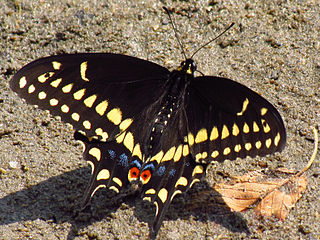
Papilio polyxenes, the (eastern) black swallowtail, American swallowtail or parsnip swallowtail, is a butterfly found throughout much of North America. It is the state butterfly of Oklahoma and New Jersey. An extremely similar-appearing species, Papilio joanae, occurs in the Ozark Mountains region, but it appears to be closely related to Papilio machaon, rather than P. polyxenes. The species is named after the figure in Greek mythology, Polyxena, who was the youngest daughter of King Priam of Troy. Its caterpillar is called the parsley worm because the caterpillar feeds on parsley.

John Obadiah Westwood was an English entomologist and archaeologist also noted for his artistic talents. He published several illustrated works on insects and antiquities. He was among the first entomologists with an academic position at Oxford University. He was a natural theologian, staunchly anti-Darwinian, and sometimes adopted a quinarian viewpoint. Although he never travelled widely, he described species from around the world on the basis of specimens, especially of the larger, curious, and colourful species, obtained by naturalists and collectors in England.
Thomas Andrew Bailey was a professor of history at his alma mater, Stanford University, and authored many historical monographs on diplomatic history, including the widely used American history textbook, The American Pageant. He was known for his witty style and clever terms he coined, such as "international gangsterism." He popularized diplomatic history with his entertaining textbooks and lectures, the presentation style of which followed Ephraim Douglass Adams. Bailey contended foreign policy was significantly affected by public opinion, and that current policymakers could learn from history.

George Alfred Leon Sarton was a Belgian-born American chemist and historian. He is considered the founder of the discipline of the history of science as an independent field of study. He has a significant importance in the history of science and his most influential work was the Introduction to the History of Science, which consists of three volumes and 4,296 pages. Sarton ultimately aimed to achieve an integrated philosophy of science that provided a connection between the sciences and the humanities, which he referred to as "the new humanism".

The Archaeological Survey of India is an Indian government agency attached to the Ministry of Culture that is responsible for archaeological research and the conservation and preservation of cultural monuments in the country. It was founded in 1861 by Alexander Cunningham who also became its first Director-General.

Lynn Thorndike was an American historian of medieval science and alchemy. He was the son of a clergyman, Edward R. Thorndike, and the younger brother of Ashley Horace Thorndike, an American educator and expert on William Shakespeare, and Edward Lee Thorndike, known for being the father of modern educational psychology.

Samuel Hubbard Scudder was an American entomologist and paleontologist. He was a leading figure in entomology during his lifetime and the founder of insect paleontology in America. In addition to fossil insects, he was an authority on butterflies (Lepidoptera) and grasshoppers (Orthoptera).
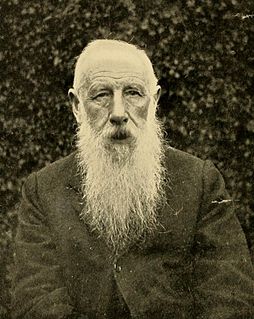
David Sharp FRS was an English physician and entomologist who worked mainly on Coleoptera. He was among the most prolific publishers in the history of entomology with more than 250 papers that included seven major revisions and reviews and a highly influential work on the structure and modifications of the male genital structures among the beetle families. He was the editor of the Zoological Record for three decades.
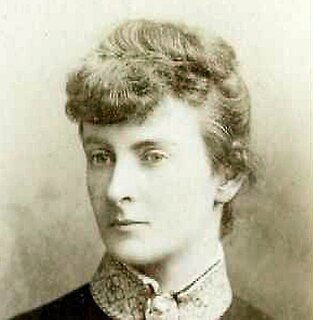
Margaret Elizabeth Fountaine, was a Victorian lepidopterist who published in The Entomologist's Record and Journal of Variation. She is also known for her personal diaries, which were edited into two volumes by W. F. Cater for the popular market and published posthumously.

James John Joicey FES was an English amateur entomologist, who assembled an extensive collection of Lepidoptera in his private research museum, called the Hill Museum, in Witley, Surrey. His collection, 40 years in the making, was considered to have been the second largest in the world held privately and to have numbered over 1.5 million specimens. Joicey was a fellow of the Zoological Society of London, the Royal Geographical Society, the Royal Entomological Society, the Royal Horticultural Society, and the Linnean Society of London.

George Talbot FES was an English entomologist who specialised in butterflies. He wrote about 150 scientific papers, the majority being primarily systematic, consisting of the description of new species or the revision of various genera. He was also responsible for the curation and preservation of the Joicey collection of Lepidoptera prior to its accession by the Natural History Museum.
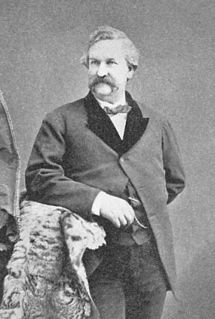
Henry Edwards, known as "Harry", was an English stage actor, writer and entomologist who gained fame in Australia, San Francisco and New York City for his theatre work.

Roland Thaxter was an American mycologist, plant pathologist, botanist, and entomologist, renowned for his contribution to the insect parasitic fungi—Laboulbeniales. His college education was completed at Harvard, where he dedicated forty years to mycological and botanical research. His five-volume series on fungi in the order Laboulbeniales laid a solid foundation of research on these insect ectoparasites. He also contributed to the field of Plant Pathology.
Annie Trumbull Slosson was an American author and entomologist.
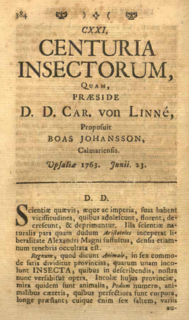
Centuria Insectorum is a 1763 taxonomic work by Carl Linnaeus, and defended as a thesis by Boas Johansson; which of the two men should be credited with its authorship has been the subject of some controversy. It includes descriptions of 102 new insect and crustacean species that had been sent to Linnaeus from British America, Suriname, Java and other locations. Most of the new names included in Centuria Insectorum are still in use, although a few have been sunk into synonymy, and one was the result of a hoax: a common brimstone butterfly with spots painted on was described as the new "species" Papilio ecclipsis.

Harrison Gray Dyar Jr. was an American entomologist.
Francis Blackwell Forbes was an American botanist with expertise in Chinese seed-producing plants who also worked as a merchant and opium trader in Asia.
The New York Entomological Society and other entomological societies in New York have produced a number of scientific journals since the mid-19th century, some of which have moved between a set of similar societies.

Berthold Neumoegen was a German-born American stock-market investor and amateur entomologist who specialized in the Lepidoptera.
















